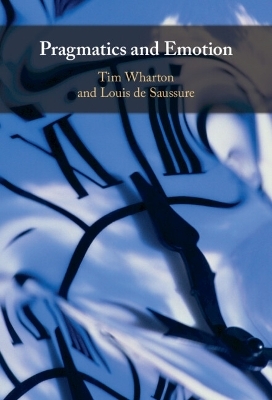
Pragmatics and Emotion
Cambridge University Press (Verlag)
978-1-108-83596-1 (ISBN)
It has long been received wisdom in semantics and pragmatics that 'the head' and 'the heart' are two opposing forces, a view that has led scholars, until now, to explore the mental processes behind cognition, and the mental processes behind emotion, as two separate entities. This bold, innovative book challenges this view, and provides an original study of how we communicate our emotions through language, drawing on both pragmatic theory and affective science. It begins with the assumption that emotional or expressive meaning plays such a central role in human interaction that any pragmatic theory worth its salt must account for it. It meets the associated challenges head-on and strives to integrate affect within one theory of utterance interpretation, showing that emotional meaning and rationality/reasoning can be analysed within one framework. Written in a clear and concise style, it is essential reading for anyone interested in communication and emotion.
Tim Wharton is a linguist based at the University of Brighton. His research explores territories beyond those regarded as the 'traditional' fields of linguists and as a result, he has worked with poets, artists, clinicians, designers and even mathematicians to expand the boundaries of linguistic pragmatics. Louis de Saussure is Professor of Linguistics at the University of Neuchâtel (Switzerland) where he co-founded the Cognitive Science Centre. He has published extensively in semantics, in pragmatics and in discourse analysis.
1. Introduction: 1.1 Prolegomena; 1.2 Clocks and clouds; 1.3 Overview; 1.3.1 Chapter two; 1.3.2 Chapter three; 1.3.3 Chapter four; 1.3.4 Chapter five; 1.3.5 Chapter six; 1.3.6 Chapter seven; 1.3.7 Chapter eight. 2. Pragmatics and emotion – the challenges: 2.1 Introduction; 2.2 Two challenges; 2.2.1 Description versus expression; 2.2.2 Propositions and ineffability; 2.3 Pragmatics. 3. What is emotion?: 3.1 Introduction; 3.2 The early history of emotion studies; 3.2.1 Aristotle to Hume; 3.2.2 Charles Darwin and William James; 3.3 Affective science; 3.3.1 Three views; 3.3.2 Basic emotion; 3.3.3 Constructed emotion; 3.3.4 The view from appraisal theory. 4. From proto-pragmatics to pragmatics: 4.1 Introduction; 4.2 Towards expressive meaning; 4.3 Bally's parole; 4.4 Speech acts: how to do things with words (and emotional expressions); 4.5 Alternatives. 5. Relevance theory, non–propositional content and ineffability: 5.1 Introduction; 5.2 Relevance; 5.2.1 Theory; 5.2.2 Applications, concepts, procedures; 5.2.3 Ineffability; 5.3 Two notions of relevance? 6. Beyond propositions: 6.1 Introduction; 6.2 Affective effects; 6.2.1 Primary affective effects; 6.2.2 Secondary affective effects: emotion and poetry; 6.2.3 Affective effects and persuasion. 7. Emotion and evolution: 7.1 Introduction; 7.2 Creature construction; 7.2.1 Pirot #1: the sea-sponge; 7.2.1 Towards a sensorium: the direct route; 7.2.3 Pirot #2: the lizard and emotion; 7.2.4 Humean projection: the indirect route. 8. Pragmatics and emotion – the challenges revisited: 8.1 Introduction; 8.2 Two challenges; 8.2.1 Expressing and describing; 8.2.2 Propositions and ineffability; 8.3 Pragmatics and emotion – closing remarks.
| Erscheinungsdatum | 12.12.2023 |
|---|---|
| Zusatzinfo | Worked examples or Exercises |
| Verlagsort | Cambridge |
| Sprache | englisch |
| Themenwelt | Geisteswissenschaften ► Philosophie ► Philosophie der Neuzeit |
| Geisteswissenschaften ► Philosophie ► Sprachphilosophie | |
| Geisteswissenschaften ► Sprach- / Literaturwissenschaft ► Sprachwissenschaft | |
| ISBN-10 | 1-108-83596-1 / 1108835961 |
| ISBN-13 | 978-1-108-83596-1 / 9781108835961 |
| Zustand | Neuware |
| Informationen gemäß Produktsicherheitsverordnung (GPSR) | |
| Haben Sie eine Frage zum Produkt? |
aus dem Bereich


